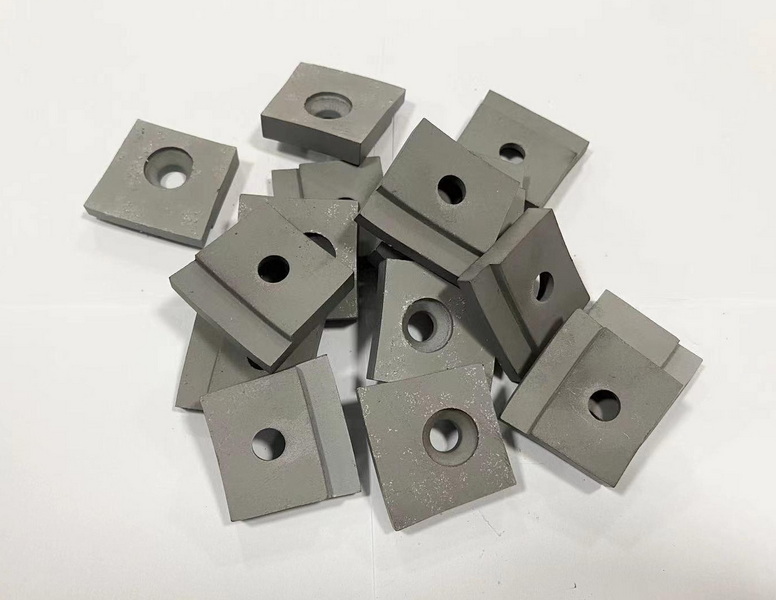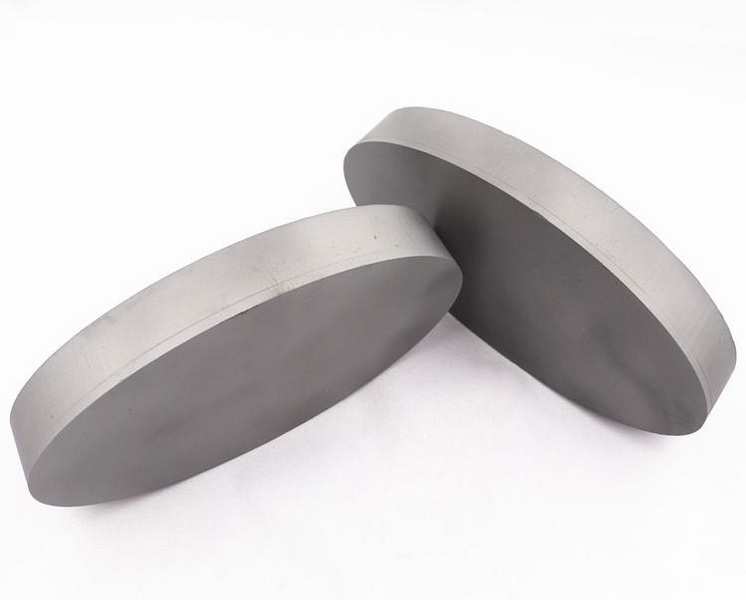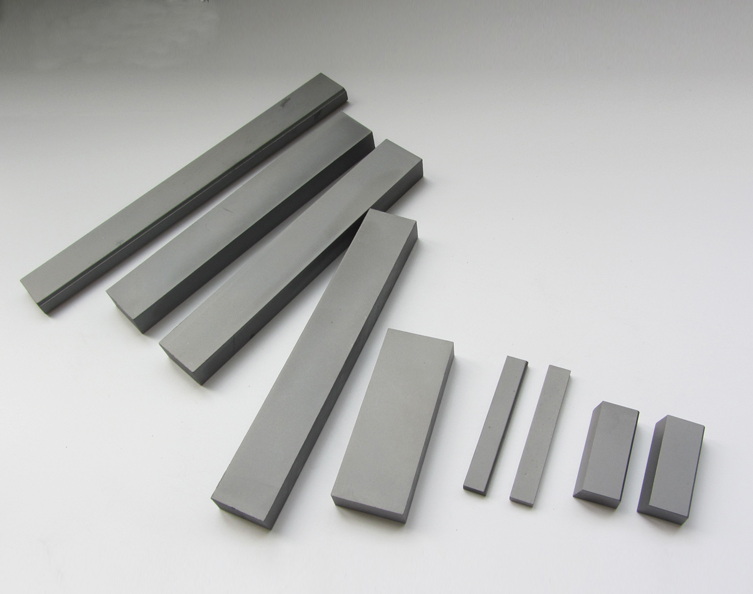Content Menu
● Introduction
● Understanding Tungsten Carbide
>> Composition and Characteristics of Tungsten Carbide
>> Comparison with Other Materials
● Benefits of Tungsten Carbide Wear Parts
>> Durability and Wear Resistance
>> Versatility in Applications
>> Cost-Effectiveness Over Time
● Applications of Tungsten Carbide Wear Parts
>> Tooling and Machining
>> Manufacturing Equipment
>> Custom Applications
● Choosing the Right Tungsten Carbide Wear Part
>> Factors to Consider
● Conclusion
● Related Questions
>> 1. What industries commonly use tungsten carbide wear parts?
>> 2. How do tungsten carbide wear parts improve equipment lifespan?
>> 3. Can tungsten carbide wear parts be customized for specific applications?
>> 4. What is the difference between tungsten carbide and other materials like steel?
>> 5. Are tungsten carbide wear parts cost-effective in the long run?
Introduction
Tungsten carbide is a remarkable material known for its exceptional hardness and durability. It is a composite of tungsten and carbon, forming a dense and robust substance that is highly resistant to wear and tear. This unique combination of properties makes tungsten carbide an ideal choice for various industrial applications, particularly in the manufacturing of wear parts. Among these, tungsten carbide flat bars stand out due to their versatility and effectiveness in numerous settings. In this article, we will explore the most common uses for tungsten carbide wear parts, focusing on their applications, benefits, and the reasons behind their widespread adoption in various industries.

Understanding Tungsten Carbide
Tungsten carbide is a material that is significantly harder than steel, making it an excellent choice for applications that require high wear resistance. The hardness of tungsten carbide is typically rated at 8.5 to 9 on the Mohs scale, which is comparable to diamond. This hardness is achieved through a process of sintering, where tungsten powder is mixed with carbon and heated to form a solid mass. The resulting material is not only hard but also has a high melting point, making it suitable for high-temperature applications.
Composition and Characteristics of Tungsten Carbide
The composition of tungsten carbide typically consists of about 80% tungsten and 20% carbon. This ratio can be adjusted to enhance specific properties, such as toughness or wear resistance. Tungsten carbide is also known for its excellent compressive strength, making it resistant to deformation under heavy loads. Additionally, it exhibits good thermal conductivity, which is beneficial in applications where heat dissipation is crucial.
Comparison with Other Materials
When compared to other materials, tungsten carbide outperforms many in terms of wear resistance and longevity. For instance, while steel is a common choice for cutting tools and wear parts, it tends to wear down more quickly under abrasive conditions. Tungsten carbide, on the other hand, maintains its sharpness and structural integrity for a much longer period, resulting in lower replacement costs and increased productivity.
Benefits of Tungsten Carbide Wear Parts
Durability and Wear Resistance
One of the primary benefits of tungsten carbide wear parts is their exceptional durability. In industries where equipment is subjected to harsh conditions, such as mining, construction, and manufacturing, the ability to withstand wear is crucial. Tungsten carbide wear parts can endure extreme abrasion, impact, and corrosion, making them ideal for use in high-stress environments.
Versatility in Applications
Tungsten carbide wear parts are incredibly versatile and can be used in a wide range of applications. From cutting tools to industrial machinery, the adaptability of tungsten carbide makes it a preferred choice across various sectors. For example, tungsten carbide flat bars are commonly used in the production of cutting tools, dies, and molds, where precision and durability are paramount.
Cost-Effectiveness Over Time
While tungsten carbide wear parts may have a higher initial cost compared to other materials, their longevity and performance often result in significant cost savings over time. The reduced frequency of replacements and maintenance, combined with increased efficiency, makes tungsten carbide a cost-effective solution for many businesses.

Applications of Tungsten Carbide Wear Parts
Tooling and Machining
Tungsten carbide wear parts are extensively used in tooling and machining applications. Cutting tools made from tungsten carbide, such as end mills, drills, and inserts, are favored for their ability to maintain sharpness and precision even under heavy use. The hardness of tungsten carbide allows these tools to cut through tough materials, including metals and composites, with ease.
Manufacturing Equipment
In manufacturing, tungsten carbide wear parts are utilized to enhance the lifespan of equipment. Components such as bearings, bushings, and wear plates made from tungsten carbide can withstand the rigors of continuous operation, reducing downtime and maintenance costs. For instance, in conveyor systems, tungsten carbide wear parts can significantly extend the life of critical components that are subject to constant friction and wear.
Custom Applications
Tungsten carbide wear parts can also be tailored for specific applications. Many manufacturers offer custom solutions, allowing businesses to design wear parts that meet their unique requirements. This customization can include variations in size, shape, and composition, ensuring optimal performance in specialized environments.
Choosing the Right Tungsten Carbide Wear Part
When selecting tungsten carbide wear parts, several factors should be considered to ensure optimal performance.
Factors to Consider
1. Grade: Tungsten carbide comes in various grades, each designed for specific applications. Higher grades typically offer better wear resistance but may be more brittle. It is essential to choose a grade that balances hardness and toughness based on the intended use.
2. Size: The dimensions of the wear part must match the specifications of the equipment it will be used in. Proper sizing ensures that the part fits correctly and functions effectively.
3. Application: Understanding the specific application is crucial. Different environments may require different properties, such as corrosion resistance or impact toughness.
4. Supplier Reputation: Sourcing tungsten carbide wear parts from reputable suppliers is vital. Quality control and manufacturing standards can significantly impact the performance and longevity of the wear parts.
Conclusion
Tungsten carbide wear parts are indispensable in various industries due to their exceptional hardness, durability, and versatility. From tooling and machining to manufacturing equipment and custom applications, the benefits of tungsten carbide are evident. While the initial investment may be higher, the long-term savings and efficiency gains make tungsten carbide an attractive option for businesses looking to enhance their operational performance. As industries continue to evolve, the demand for high-quality wear parts will only increase, solidifying tungsten carbide's position as a leading material in the manufacturing sector.

Related Questions
1. What industries commonly use tungsten carbide wear parts?
Tungsten carbide wear parts are commonly used in industries such as mining, construction, manufacturing, and aerospace due to their durability and wear resistance.
2. How do tungsten carbide wear parts improve equipment lifespan?
Tungsten carbide wear parts reduce wear and tear on equipment, leading to less frequent replacements and lower maintenance costs, ultimately extending the lifespan of machinery.
3. Can tungsten carbide wear parts be customized for specific applications?
Yes, many manufacturers offer custom tungsten carbide wear parts tailored to meet the unique requirements of specific applications, including size, shape, and composition.
4. What is the difference between tungsten carbide and other materials like steel?
Tungsten carbide is significantly harder and more wear-resistant than steel, making it a better choice for applications that involve high abrasion and impact.
5. Are tungsten carbide wear parts cost-effective in the long run?
While they may have a higher initial cost, tungsten carbide wear parts often result in long-term savings due to their durability, reduced maintenance, and lower replacement frequency.
















